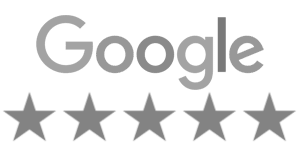Water damage can be devastating for homeowners, causing significant expenses, repairs, and other health concerns such as mold and mildew. As a water damage restoration company located in Jacksonville, Florida, Dreyer's DKI understands the importance of filing a water damage claim with your homeowner's insurance provider quickly and efficiently. In this article, we will provide a comprehensive guide on how to file a water damage claim with your homeowner's insurance provider.
Contact Your Insurance Company
The first step in filing a successful water damage claim is to notify your provider as quickly as possible so they can expedite the processing of your claim. Photos or evidence should also be readily available so they can accurately assess any damage sustained to ensure proper assessment.
A meeting should take place with an adjuster to assess whether any damages are covered under your policy. If so, they will inspect the damaged area, taking photos and measurements before estimating how much the damage costs and issuing you with a check for that amount.
Before having an insurance inspection completed, it would also be wise to relocate any belongings in the affected area until then. This will protect against further damage while decreasing how much money needs to be spent on repairs.
If you hire a contractor for temporary repairs, save all receipts as this will form part of your total settlement agreement.
Document the Damage
When faced with water damage from leakage or flooding, it's essential that all damages be documented immediately in order to expedite the claims process and provide evidence in support of your claim. This will expedite it all more quickly.
Photographing or videotaping any water damage and damaged items will assist your insurance provider when filing a claim. In addition, providing them with an updated home inventory should help them accurately value all your belongings prior to flooding.
When dealing with leaky appliances such as water heaters or washing machines, it is wise to keep records detailing when and how long the device has been leaking for. This will give your insurance provider an accurate picture of whether or not your problem constitutes a covered loss.
As soon as damage occurs, it's advisable to have a plumber inspect the area and take photos or video footage of its severity. Furthermore, drying-up areas where there may be water or mold accumulation could help avoid further destruction to floors, walls and baseboards.
Once you have documented the damage, it's time to file your insurance claim. This can be done online, over the phone or through paper forms.
Before filing your claim, contact your insurance agent or company and ensure you have all of the documentation needed. This will help ensure you get enough money to rebuild your home after flooding has struck and begin the recovery process more effectively.
Early filing of your claim increases the speed with which the insurer can assess and pay for repairs. Filing a water damage claim may seem intimidating, but following these simple steps will make the process simpler for both you and your insurer.
Schedule an Inspection
Step one in filing a
water damage claim is to reach out to your homeowner's insurance provider and have an adjuster come and inspect your property. They may request photos and measurements to assess how extensive the damage may be.
Once they've assessed the damage, an adjuster will provide you with a written estimate of how much money it will cost to repair the property. They may ask questions regarding its cause and timing so as to accurately calculate repair costs.
Adjusters often ask if any temporary repairs have been completed on your property, so make sure to keep receipts for these works so you can submit them as invoices to your insurance provider and seek reimbursement from them.
If you are concerned about hidden water damage when purchasing a home, professional inspectors can perform an inspection to detect leaks or any other problems which might not be immediately visible to the naked eye. They have experience detecting problems which are
otherwise undetectable by eye. Inspectors often rely on infrared cameras to spot hidden water damage. The camera enables them to spot leaks not visible to the naked eye, potentially saving thousands in repairs if caught early enough.
As another way of avoiding hidden water damage, buying a house with a strong foundation and drainage system is also beneficial in protecting against future issues following repair of damage. These features may prevent further issues from emerging after any repair work has been completed.
Make a Claim
Homeowners insurance is an excellent way to safeguard against perils like fire, storms and theft - and should any such event arise, the best thing you can do to file a claim is contact your insurer immediately - this allows them to send an adjuster out quickly who can assess damage and determine repairs required before sending out a check for payment of said work.
Water damage claims are among the most frequently filed with homeowner insurance policies; according to the Insurance Information Institute, 20% of homeowner claims involve water damage.
Therefore, it is crucial that you file your water damage claim with your homeowner's insurance as quickly as possible; otherwise, they could find other grounds to deny your claim.
If the water damage resulted from you not taking action to address issues with your plumbing, for instance, your insurance company might deny your claim.
As mentioned previously, water issues in your house should never be neglected because they could lead to mold growth, which is both costly and detrimental to health. Immediate remediation must occur so as to stop further structural damage as well as respiratory conditions such as asthma or bronchitis developing due to mold spores spread by these organisms.
Mold can increase your insurance rates. Many insurance companies utilize a database called
Comprehensive Loss Underwriting Exchange (CLUE) to calculate how much they should charge you for their policies.
If you find it necessary to file a claim, take notes detailing everything that needs repairing so as to demonstrate the extent and cause of damage. This will enable you to successfully establish what occurred during a claim investigation.
Once you have an exhaustive list of items needing repairs, be sure to gather any receipts possible as evidence of damages. A public adjuster could also assess and negotiate with insurers on your behalf.
In general, the claims process will go smoothly, and you should be reimbursed for any costs of damage sustained to your property. However, you should continue checking with your insurer regularly throughout this process to ensure everything is handled in an expedient manner.
Conclusion
Water damage can cause significant damage to your property, as well as pose serious health risks if not addressed in a timely manner. To ensure that you receive the necessary funds for repairs, you must file a water damage claim with your homeowner's insurance provider as quickly as possible.
Additionally, you can also seek assistance from relevant agencies such as the
National Flood Insurance Program (NFIP) to learn more about water damage restoration and insurance claims.
By following the steps outlined in this guide, you can successfully file a water damage claim, document the damage, schedule an inspection, and make a claim. With the help of a reputable water damage restoration company like
Dreyer's DKI, you can be confident that your home will be restored to its pre-damaged condition in no time.





